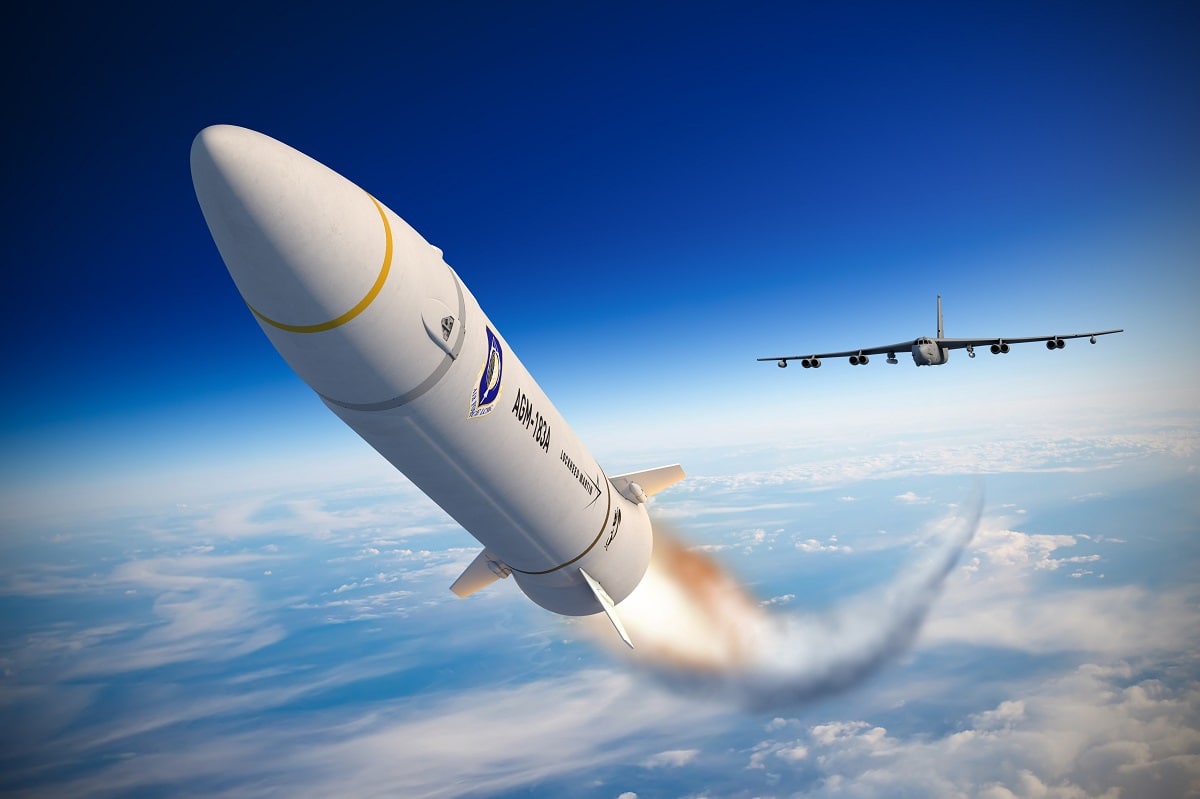The United States Air Force has announced it won’t pursue a hypersonic weapons program under development by aerospace and defense giant Lockheed Martin. Instead, service officials have signaled they’ll look to support a different initiative by rival Raytheon Corp. Bloomberg first reported on Wednesday.
The decision comes following a March 13 test of a hypersonic weapon that the Air Force admitted was “not a success.” The Lockheed Martin AGM-183A Air-launched Rapid Response Weapon (ARRW) had seen a number of failures during testing, and as a result, Air Force Secretary Frank Kendall told lawmakers that the program would be ended.
End of the ARRW?
The AGM-183 ARRW is a hypersonic air-to-ground missile that is equipped with a rocket motor that speeds it up to more than Mach 5 before it glides to its target. Lockheed Martin was awarded a $480 million Air Force contract in August 2018 to develop the air-launched hypersonic weapon.
The program, which did have a successful test last December, has been marred by a number of setbacks. As a result, last year Congress halved the funding for the hypersonic weapon platform, which put the procurement contract at risk.
Lockheed Martin’s Broken ARRW
Speaking during a House Appropriations defense subcommittee hearing, Kendall said that the service is still determining what had caused the problems with the ARRW.
“They have two more test articles that we can use, and we’ll probably have to make a decision on the fate of ARRW after we complete the analysis and hopefully do those two tests,” Kendall said on Tuesday.
However, a day later, Air Force acquisition chief Andrew Hunter said in a written statement to the House Armed Service’s tactical air and land forces subcommittee that the service, “does not currently intend to pursue follow-on procurement of the ARRW once the prototyping program concludes.” Any follow-up tests will be conducted “to garner the learning and test data that will help inform future hypersonic programs.”
Raytheon’s HACM to Move Forward
The United States Air Force is now “more committed to HACM [the Hypersonic Attack Cruise Missile, the service’s other major hypersonic weapon program] at this point in time than we are to ARRW,” Kendall told lawmakers.
According to Air Force budget documents, the service will be requesting $381 million in its fiscal year 2024 (FY24) budget to continue rapid prototyping work for the cruise missile. That program has already been described as “reasonably successful,” and had previously received $423 million in FY23, while the service’s budget documents further map out plans for nearly $1.5 billion to be directed on the development of the HACM between FY25 and FY28.
“We see a definite role for the HACM concept,” Kendall explained. “It’s compatible with more of our aircraft, and it will give us more combat capability overall.”
HACM is an air-launched, scramjet-powered hypersonic weapon that is now being developed to hold high-value targets at risk in contested environments from standoff distances. The Air Force plans to deliver a HACM capability with operational utility by fiscal year 2027.
“HACM is a powerful example of developing and integrating combat capabilities alongside our partners from the beginning,” said Air Force Chief of Staff Gen. CQ Brown, Jr. last year. “HACM will provide our commanders with tactical flexibility to employ fighters to hold high-value, time-sensitive targets at risk while maintaining bombers for other strategic targets.”
Speed Demons
Hypersonic weapons like ARRW have been seen as a potential game-changer for any military, as the missiles can fly in excess of Mach 5, or five times the speed of sound, and are generally designed to be highly maneuverable in flight. Along with their greater speeds, hypersonic missiles also have the ability to maneuver with computerized precision, which could make them difficult to counter.
Moreover, a hypersonic missile’s speed and force are so significant that it can inflict damage by its sheer ‘kinetic’ impact without even needing explosives.
As of last year, the United States military currently had at least five hypersonic weapons programs in the works, but the Pentagon has also been focused on countering such weapons. Last year, the U.S. Missile Defense Agency (MDA) awarded contracts of approximately $20 million each to Raytheon Co., Lockheed Martin Corp., and Northrop Grumman Corp. to develop prototypes of a hypersonic missile intended to intercept and destroy an adversary’s hypersonic projectile in the unpowered glide phase of its trajectory.
MORE: PAK DA – Is Russia New Stealth Bomber a Joke?
MORE: Was the F-14 Tomcat Retired Too Early?
MORE: Nimitz-Class – The Best Aircraft Carrier Ever?
Author Experience and Expertise:
A Senior Editor for 19FortyFive, Peter Suciu is a Michigan-based writer. He has contributed to more than four dozen magazines, newspapers, and websites with over 3,200 published pieces over a twenty-year career in journalism. He regularly writes about military hardware, firearms history, cybersecurity, politics, and international affairs. Peter is also a Contributing Writer for Forbes and Clearance Jobs. You can follow him on Twitter: @PeterSuciu.

